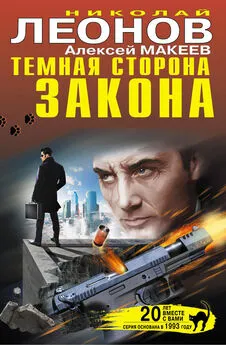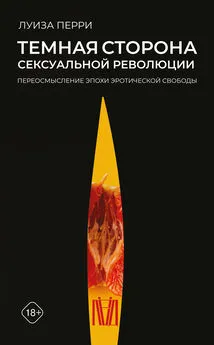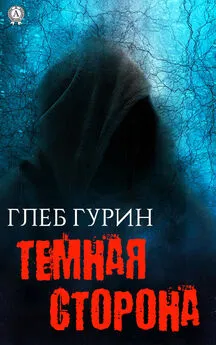Майкл Манн - Темная сторона демократии. Объяснение этнических чисток
- Название:Темная сторона демократии. Объяснение этнических чисток
- Автор:
- Жанр:
- Издательство:неизвестно
- Год:2016
- ISBN:нет данных
- Рейтинг:
- Избранное:Добавить в избранное
-
Отзывы:
-
Ваша оценка:
Майкл Манн - Темная сторона демократии. Объяснение этнических чисток краткое содержание
Темная сторона демократии. Объяснение этнических чисток - читать онлайн бесплатно ознакомительный отрывок
Интервал:
Закладка:
Gutman, R. 1993. A Witness to Genocide. New York: Macmillan.
Haberer, E. 2001. “The German Police and Genocide in Belorussia, 1941 1944”, Journal of Genocide Research, vol. 3, in three parts.
Haebich, A. 1988. For Their Own Good: Aborigines and Government in the Southwest of Western Australia 1900-1940. Perth: University of Western Australia Press.
Hagen, W. 1996. “Before the ‘Final Solution’: Toward a Comparative Analysis of Political Anti-Semitism in Interwar Germany and Poland”. Journal of Modem History, vol. 68.
Hagtvet, B. 1980. “The Theory of Mass Society and Weimar”, in S. Larsen et al. feds.), Who Were the Fascists? Social Roots of European Fascism. Oslo: Universitetsforlaget.
Hainsworth, P., & McCloskey, S. 2000. The East Timor Question. London: I. B. Taurus
Hancock, I. 1996. “Responses to the Porrajmos: The Romani Holocaust”, in A. Rosenbaum (ed.), Is the Holocaust Unique ? Boulder, Colo.: Westview.
Haney, С., et al. 1973. “Interpersonal Dynamics in a Simulated Prison". International Journal of Criminology and Penology, vol. 1.
Harding, N. 1984. “Socialism, Society and the Organic Labour State", in Harding (ea.), The State in Socialist Society. London: Macmillan.
Harff, B. 1998. “Early Warning of Humanitarian Crises: Sequential Models and the Role of Accelerators”, in Davies & Gurr (eds.), Preventive Measures.
Harff, B. 2003. “No Lessons Learned from the Holocaust? Assessing Risks of Genocide and Political Mass Murder since 1955”. American Political Science Review, vol. 97.
Harff, B., & Gurr, T. 1988. “Toward an Empirical Theory of Genocides and Politicides: Identification and Measurement of Cases Since 1945”. International Studies Quarterly, vol. 32.
Hart, P. 1998. TheI.R.A. and Its Enemies. Oxford: Oxford University Press.
Hartunian, A. 1986. Neither to Laugh Nor to Weep: A Memoir of the Armenian Genocide, 2nd ed. Cambridge, Mass: Armenian Heritage Press.
Hastings, A. 1997. The Construction of Nationhood. Cambridge: Cambridge University Press.
Havranek, J. 1971. “Fascism in Czechoslovakia”, in Sugar (ed.), Eastern European Nationalism in the Twentieth Century.
Hayden, R. 1996. “Imagined Communities and Real Victims: SelfDetermination and Ethnic Cleansing in Yugoslavia”. American Ethnologist, vol. 23.
Headland, R. 1992. Messages of Murder: A Study ofthe Reports ofthe Einsatzgruppen of the Security Police and the Security Service, 1941-1943. London: Associated Universities Press.
Heer, H. 1997. “Killing Fields: TheWehrmacht and the Holocaust in Belorussia, 1941-1942”. Holocaust and Genocide Studies, vol. 7.
Hefner, R. 1991. “Ethicity, Nation, and Nationalism in Modern Indonesia”, in U. Ra’anan (ed.), State and Nation in Multiethnic Societies. Manchester: Manchester University Press.
Hefner, R. 2000. Civil Islam: Muslims and Democratization in Indonesia. Princeton, N.J.: Princeton University Press.
Heizer, R. 1993. The Destruction of California Indians. A Collection of Documents. Lincoln: University of Nebraska Press.
Helsinki Watch. 1992, 1993. War Crimes in Bosnia-Hercogovina, Vols. I & II. New York: Human Rights Watch.
Heng, L., & Demeure, F. 1994. Cambodge: Le sourire baillonne. Xonrupt- Longemer: Anako.
von Hentig, H. 1977. “Beitrdge zu einer Sozialgeschichte des Dritten Reich”. VierteljahrshejleJur Zeitgeschichte, vol. 16.
Herbert, U. (ed.) 2000. National Socialist Extermination Policies. New York: Berghahn.
Herczl, M. 1993. Christianity and the Holocaust of Hungarian Jewry. New York: New York University Press.
Heuveline, P. 2001. ‘Approaches to Measuring Genocide: Excess Mortality during The Khmer Rouge Period”, in Chirot and Seligman (eds.), Ethnopolitical Warfare.
Heuze, G. 1992. “Shiv Sena and ‘National’ Hinduism”. Economic and PoliticalWeekly (Delhi), October 3 and 10.
Hilberg, R. 1978. The Destruction of the European Jews. New York: Octagon.
Hilberg, R. 1980. “The Significance of the Holocaust”, in H. FriedlSnder & S. Milton (eds.), The Holocaust: Ideology, Bureaucracy and Genocide. Millwood, N.Y.: Kraus International.
Hilberg, R. 1993. Perpetrators, Victims, Bystanders: The Jewish Catastrophe 19331945. London: Lime Tree.
Hintjens, H. 1999. “Explaining the 1994 Genocide in Rwanda”. Journal of Modem African Studies, vol. 37.
Hinton, W. 1966. Fanshen: A Documentary of Revolution in a Chinese Village. New York: Monthly Review.
H6ffkes, K. 1986. Hitlers Politische Generate. Tuebingen: Grabert.
Hoffman, D. 1993. “The Great Terror on the Local Level: Purges in Moscow Factories, 1936-1938”, in Getty & Manning (eds.), Stalinist Terror.
Hoffman, P. 1988. German Resistance to Hitler. Cambridge, Mass.: Harvard University Press.
Holbrooke, R 1998. To End a War. New York: Random House.
Holquist, P. 2003. “The Russian Empire as a ‘Civilized Nation’: International Law as Principle and Practice in Imperial Russia, 1874-1917”. Unpublished paper presented at the Sawyer Seminar on the Dynamics of Mass Killing, Palo Alto, Calif., March 2003.
Honig, J., & Both, N. 1996. Srebrenica: Record if a Warcrime. Harmondsworth, Middlesex: Penguin.
Horowitz, D. 1985. Ethnic Groups in Conflict. Berkeley & Los Angeles: University of California Press. a
Horowitz, D. 1999. “Constitutional Design: An Oxymoron?” Nomos, vol. 41s.
Horowitz, D. 2001. The Deadly Ethnic Riot. Berkeley & Los Angeles: University of California Press.
Horowitz, 1.1982. Taking Lives: Genocide and State Power. New Brunswick, N.J.: Transaction.
Horwitz, G. 1990. In The Shadow of Death. New York: Free Press.
Hoss, R.,et al. 1978. Kl^Auschmitz Seen By theSS. Cracow: Panstwowe Muzeum.
Русский перевод: Освенцим в глазах СС. Гесс, Броад, Кремер / Пер. с нем. Каминьской. Освенцим: Издательство Государственного музея в Освенциме, 1975.]
Hovanmsian, R. (ed.) 1986. The Armenian Genocide in Perspective. New Brunswick, N.J.: Transaction.
Hovannisian, R 1994. “Etiology and Sequence of the Armenian Genocide”, in his Genocide: Conceptual and Historical Dimensions. Philadelphia-. University of Pennsylvania Press.
Hoxie, F. 1984. A Final Promise: The Campaign to Assimilate the Indians, 1880-1920. Lincoln: University of Nebraska Press.
Hughes, R. 1987. The Fatal Shore. New York: Knopf.
Hukanowicz, R 1996. The Tenth Circle of Hell: A Memoir qf Life in the Death Camps of Bosnia. New York: Basic Books.
Hull, I. 2004. Going to Extremes: Military Culture and Wars of Annihilation in Imperial Germany (provisional title). Ithaca, N.Y.: Cornell University Press.
Human Rights Watch. 1999 and 2003. “World Reports: Burundi, Rwanda, Sudan”. Available at http://www.hrw.org/hrw/wr2k/Africa.
Human Rights Watch. World Report 1999. Yugoslavia. URL: www.hrw.org/ hrw2k.
Human Rights Watch. 2002. “We Have No Orders to Save You”. State Participation and Complicity in Communal Violence in Gujarat. Available at www.hrw.oig.
Human Rights Watch. 2004. “Ethnic Cleansing in Darfur”. Available at www.hrw.org/reports/2004/Sudan.
Hunczab, T. 1990. “The Ukrainian Losses during World War II”, in Berenbaum (ed.), A Mosaic qf Victims.
Hunter, E. 1993. Aboriginal Health and History. Cambridge: Cambridge University Press.
Huntington, S. 1996. The Clash of Civilizations and the Remaking ofWorld Order. New York: Simon & Schuster. [Русский перевод: Хантингтон С. Столкновение цивилизаций / Пер. с англ. ГО. Новикова, Т. Велимеева. М.: ACT; Мидгард, 2003.]
Hurtado, А. 1988. Indian Survival on the California Frontier. New Haven, Conn.: Yale University Press.
Hurtado, А. 1994. “Indian and White Households on the Californian Frontier, 1860”, in his Indian Survival on the California Frontier.
Hutchinson, J. 1994. Modem Nationalism. London: Fontana.
Ibrahim, J. 1999. “Ethno-Religious Mobilisation and the Sappings of Democracy in Nigeria”, in J. Hyslop (ed.), African Democracy in the Era of Globalisation. Johannesburg: Witwatersrand University Press.
in’t Veld, N. 1976. De SS en Nederland: documenten uit SS-archieven 1935-1945. ‘s-Gravenhage: Nijhoff.
Inbaraj, S. 1995. East Timor: Blood and "Bars inAsean. Chiang Mi, Thailand: Silkworm Books.
Institut Fur Armenische Frage. 1988. The Armenian Genocide, Vol. 2: Documentation. Munich: author (in German).
Institute for War and Peace Reporting. 1998-2000. Tribunal Updates & Press Releases. Available at http://www.iwpr.net.
Institute of National Remembrance. 2002. The Jedwabne Case, Vol. I: Analyses (English Summary 1). Warsaw: author.
Internews. 2000. “Reports”. URL: http://mterneews.org/projects/ICTR.
Ioanid, R 1990. The Sword of the Archangel. New York: Columbia University Press.
Ioanid, R. 1991. “The Pogrom of Bucharest 21-23 January 1941”. Holocaust and Genocide Studies, vol. 6.
Ioanid, R. 1994. “The Antonescu Era”, in Braham (ed.), The Tragedy of Romanian Jewry. New York: Columbia University Press.
Ioanid, R 2000. The Holocaust in Romania. Chicago: Ivan Dee.
IzzetPasa, A. 1992 .Feryadim [My Crying Out], Vol. I. Istanbul: Nehir Yayinlari.
Jacobsen, H.-A.: 1968. “The Commissar Order and Mass Executions of Soviet Prisoners of War”, in: Buchheim et al. (eds.), Anatomy of the SS-State.
Jafarian, B. 1989. Farewell Kharpert. Madison, Wis.: Mangasarian.
Jaffrelot, C. 1996. The Hindu Nationalist Movement in India. New York: Columbia University Press.
Jamin, M. 1984. Zwischen den Klassen: Zur Sozialstruktur der SA-Fuhrerschafl. Wuppertal: Hammer.
Janjic, D. (ed.). 1995. Serbia Between the Past and the Future. Belgrade: Institute of Social Sciences and Forum for Ethnic Relations.
Jansen, C., & Weckbecker, A. 1992. ‘“Der Volksdeutcher Selbschutz’ in Polen 1939/40”, in Schriftenreihe der ViertaljahrsescheftefUr Zeitgeschichte, Vol. 14. Munich: Oldenbourg.
Jarauscn, K. 1990. The Unfree Professions: German Lawyers, Teachers and Engineers, 1900-1950. Oxford: Oxford University Press.
Jelinek, Y. 1976. The Parish Republic: Hlinka’s Slovak People’s Party, 1931-1945. New York: Columbia University Press.
Jelinek, Y. 1989. “The ‘Final Solution’ – the Slovak Version”, in Marrus (ed.), The Nazi Holocaust.
Jenkins, G. (ed.) 1997. The Welsh Language Before the Industrial Revolution. Cardiff: University оГ Wales Press.
Jenkins, G., et al. 1997. “The Welsh Language in Early Modern Wales”, in Jenkins (ed.), The Welsh Language.
Jonassohn, K., with Bjornson, K. 1998. Genocide and Gross Human Rights Violations in Comparative Perspective. New Brunswick, N.J.: Transaction.
Читать дальшеИнтервал:
Закладка:






